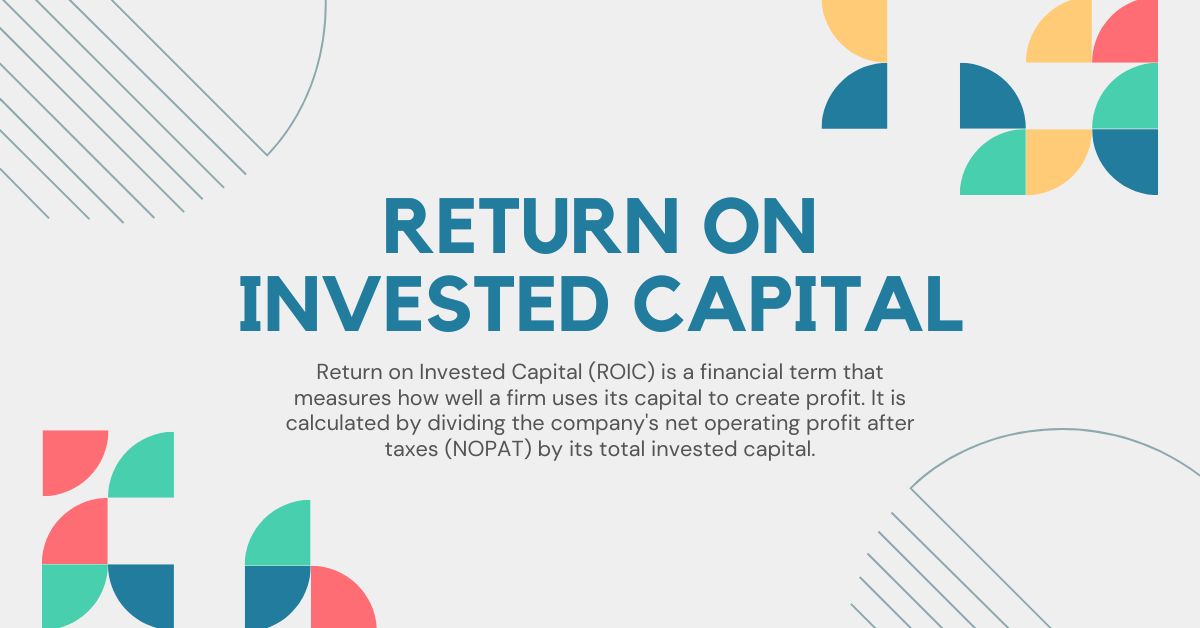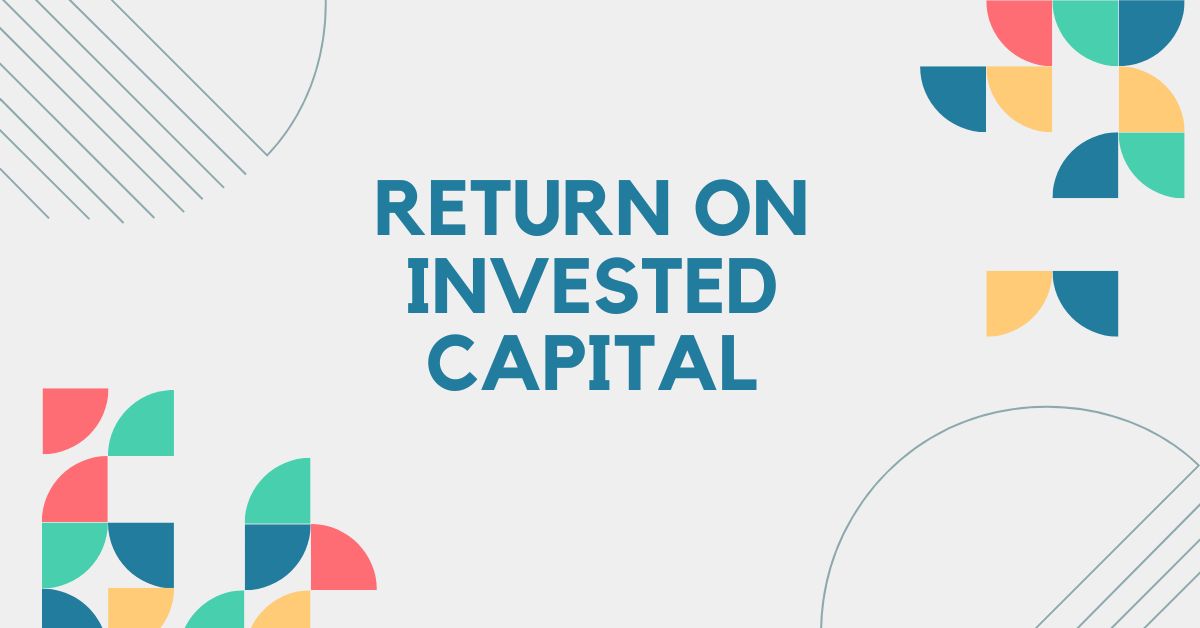Return on invested capital (ROIC) is a metric that measures a company’s investment profitability as a proportion of its total capital, including debt and equity. It’s a valuable indicator for analyzing a firm and putting its stock value into context.
Digging through a company’s financial records and performing some math might help you assess if a company’s stock is worth more than its rivals or if the stock market has undervalued it.
In this post, we will look at how to calculate ROIC, what investors can learn from the statistic, where it falls short, and provide a real-world example.
What is Return on Invested Capital?

Return on Invested Capital (ROIC) is a financial term that measures how well a firm uses its capital to create profit. It is calculated by dividing the company’s net operating profit after taxes (NOPAT) by its total invested capital.
A greater ROIC shows better capital usage since the organization generates more earnings per dollar invested. ROIC is a useful tool for investors and analysts to evaluate a company’s financial performance and capacity to generate long-term value.
Formula of Return on Invested Capital
The formula for Return on Invested Capital (ROIC) is:
ROIC = NOPAT / Invested Capital
Where:
- Net Operating Profit After Taxes, or NOPAT, is a financial term. It shows the business’s running profit after taxes are taken out.
- All the money that has been put into a business, including debt and stock, is called “invested capital.” It’s calculated by adding the company’s net working capital to its net fixed assets.
ROIC is a valuable metric for assessing a company’s efficiency in using its capital to generate profits. A higher ROIC generally indicates better financial performance and stronger long-term prospects.
What is Invested Capital in ROIC?
In terms of ROIC, invested capital refers to the entire amount of capital that a firm uses to run its operations. This capital is derived from two basic sources: loans and equity. Debt capital is borrowed money, whereas equity capital is obtained by issuing shares to investors.
Invested capital is the total of these two components. It represents the overall financial resources available to the firm to support operations, make investments, and earn profits. A higher level of invested capital often suggests a larger scope of activities and potential for greater expansion.
If you want to learn about other ratios, you can read here by clicking the links given below:
- What is Return on Investments (ROI)? A Beginner’s Guide to Measuring Financial Success
- What is Return on Assets (ROA)? A Simple Guide to Measuring Profitability
What is a Good Return on Capital Investment?
A “good” return on invested capital (ROIC) varies with industry and economic conditions. In general, an ROIC that exceeds the company’s Weighted Average Cost of Capital (WACC) is regarded as favorable. This signifies that the company’s worth exceeds the cost of its capital, hence creating value for its owners.
A greater ROIC frequently indicates effective capital allocation, good operational performance, and a long-term competitive advantage. While there is no uniform benchmark, an ROIC regularly exceeding 10% is frequently regarded positively, particularly when compared to industry rivals. It’s crucial to note that a solid ROIC should be evaluated with other financial indicators and industry benchmarks for a complete picture.
Why is Return on Invested Capital Important?
Return on Invested Capital (ROIC) is an important financial indicator that assesses how well a firm uses its capital to produce profits. A high ROIC suggests that a firm is effectively allocating resources to generate value for its owners. It assists investors in determining a company’s financial health, ability to develop, and potential for future profits.
Furthermore, ROIC is valuable for evaluating the performance of various businesses, sectors, and investment prospects. By examining a company’s ROIC over time, investors may spot patterns, evaluate management performance, and make sound investment decisions.

